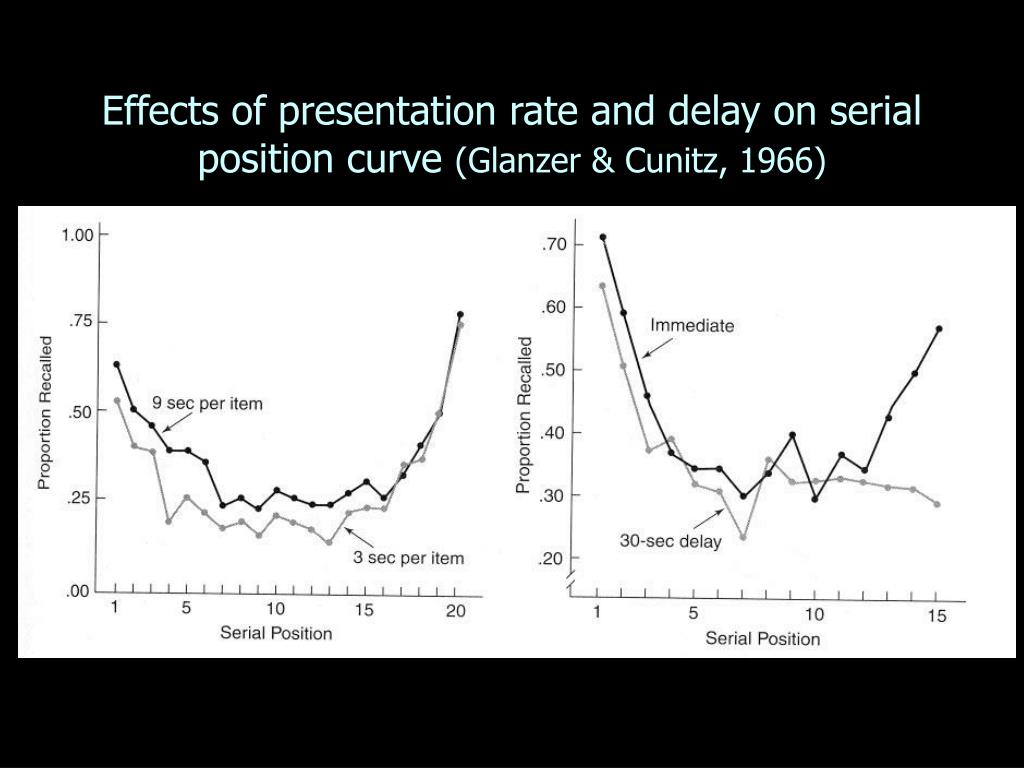

The experimenter read the words as they appeared also. One of these experiments used 46 enlisted army men who were shown word monosyllabic words from the Thorndike-Lorge lis t on a screen using a projector. In order to demonstrate this, they conducted a series of experiments involving memory tests. Glanzer and Cunitz proposed that this was because the memories were coming from two different stores – the STS and the LTS. This has been dubbed the serial position effect (aka the primacy and recency effects). Using this method, researchers detected a pattern: participants can remember words better when they appear at the beginning of a list and at the end of a list. listening to a tape recording of words read out) and they are then asked to write down in any order (free) as many words as they can remember (recall). This is when participants are exposed to a list of words (e.g. The Primacy and Recency Effect (Glanzer and Cunitz, 1966)Ī common method used to investigate memory is using free recall. This can be shown in Glanzer and Cunitz’s famous study. Information in the middle may be lost because of the limited capacity of the STS. They tend to remember the most recent information because it is still in their STS.

This provides evidence for the MSM: people tend to remember the first items because they have longer to rehearse the information and they may have paid more attention to it, so it has a higher probability of being transferred to the LTS. The serial position effect (aka primacy and recency effect) is a cognitive phenomenon whereby people tend to remember the first (primacy) and last (recency) items in a series.

The following has been adapted from IB Psychology: A Student’s Guide Evidence for MSM: Serial position effect (primacy and recency effects)


 0 kommentar(er)
0 kommentar(er)
